
You don’t want your pet to be unhappy, do you?
And unhappiness is only the first step. Stress can lead to serious health issues.
You always want to keep an eye on your pet to make sure it is comfortable. At the first sign of stress, try to figure out what is causing the stress and fix it.
How do you know your ball python is stressed?
Let’s take a look at the most common signs of stress in a ball python.
Table of Contents
Signs Of Stress In Ball Pythons
The following are the most common indicators that your pet ball python is feeling stressed. Usually, it will exhibit several stress symptoms, not just one in isolation.
Hissing

One of the first signs of stress or discomfort in ball pythons is hissing.
Many non-lethal species of snake hiss to intimidate potential predators. If your ball python is hissing at you every time you approach it, it may think that you’re a threat.
Snakes hiss by forcing air through an opening in the glottis, a small organ located in their throat. Interestingly, the glottis organ can also be found in frogs and human beings.
Our glottis isn’t used for hissing, though. Instead, our bodies use this tiny organ for swallowing, helping us digest food more efficiently.
But a snake isn’t going to hiss while swallowing food. It also won’t hiss to communicate with its owner or caretaker. How do snakes communicate with humans or each other then?
There are a few different ways, but hissing isn’t one of them. And none are true forms of communication. Most are simply warnings, like the hiss. Unlike dogs and cats, ball pythons aren’t social creatures. A hiss is a warning sign meant to let you know that strikes and bites are imminent.
Striking
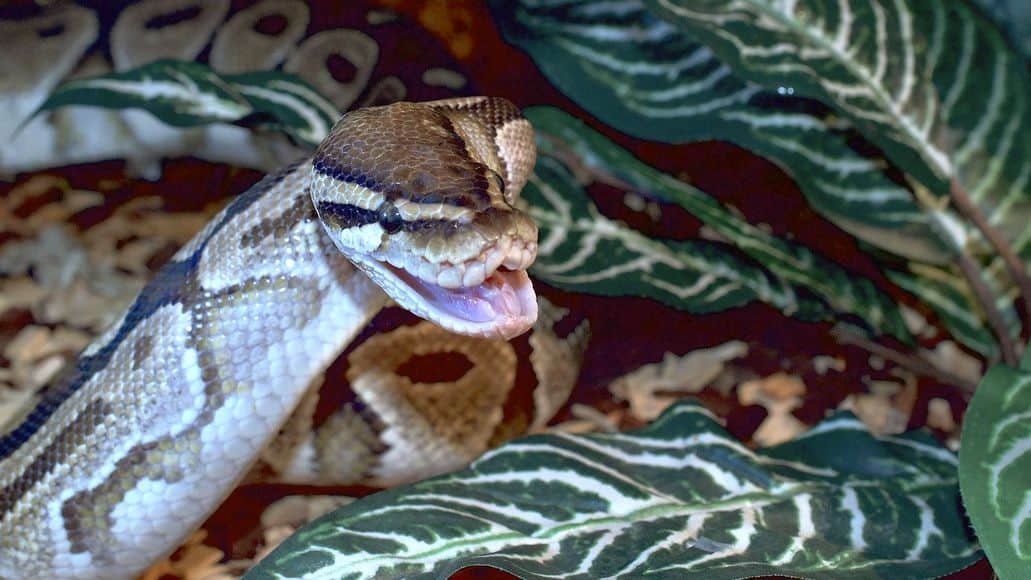
Striking or mock-striking is an obvious sign of stress. If your ball python is pulling its head back, hissing, then quickly striking at you, it’s miserable.
A snake typically only strikes to either defend itself or eat. Some snakes may also feel annoyed enough to lash out in this way when they are busy digesting a meal.
Some snakes may also rub their heads against their enclosure’s glass walls or attempt to strike through their habitats’ glass and wire.
This behavior can end in injury for the poor snake, so it’s vital to find a solution as soon as possible.
Additionally, stressed-out ball pythons may feel forced to bite their owners, which may be problematic.
Biting
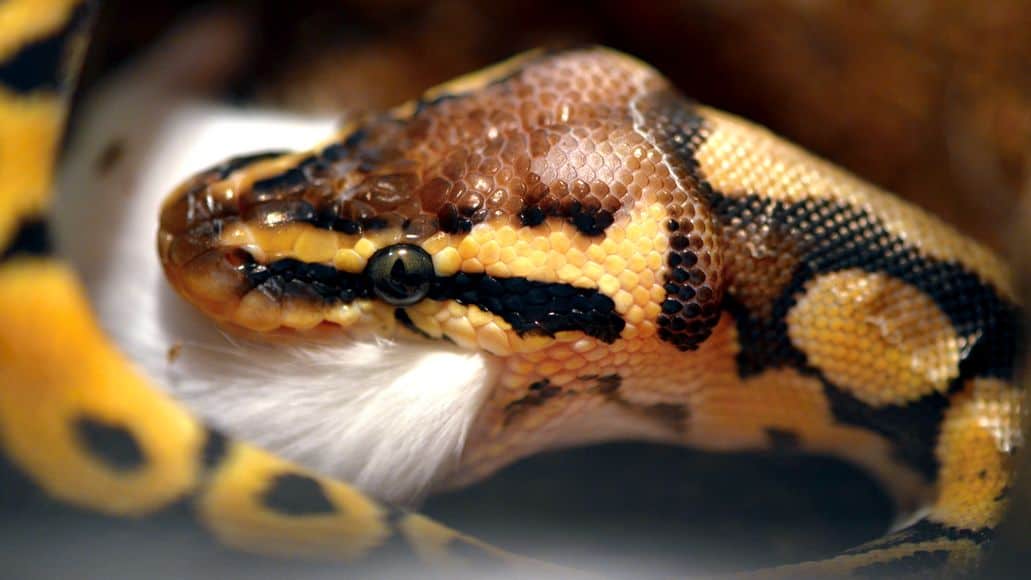
Ball pythons have dual rows of sharp, needle-like teeth. These teeth point slightly inward toward the snake’s throat.
This design helps them keep prey trapped after biting them, because anything they bite will impale itself further when trying to escape.
Being bitten by a ball python is quite rare. They even made our list of snakes that are unlikely to ever bite. But that doesn’t mean it never happens.
Snake bites are typically rapid and challenging to avoid when they happen. They can be somewhat painful, and it’s not uncommon for the bitten area to bleed slightly.
Still, ball pythons aren’t venomous, and a bite won’t kill you. It should let you know that there’s something wrong with your snake, though.
Head-Hiding
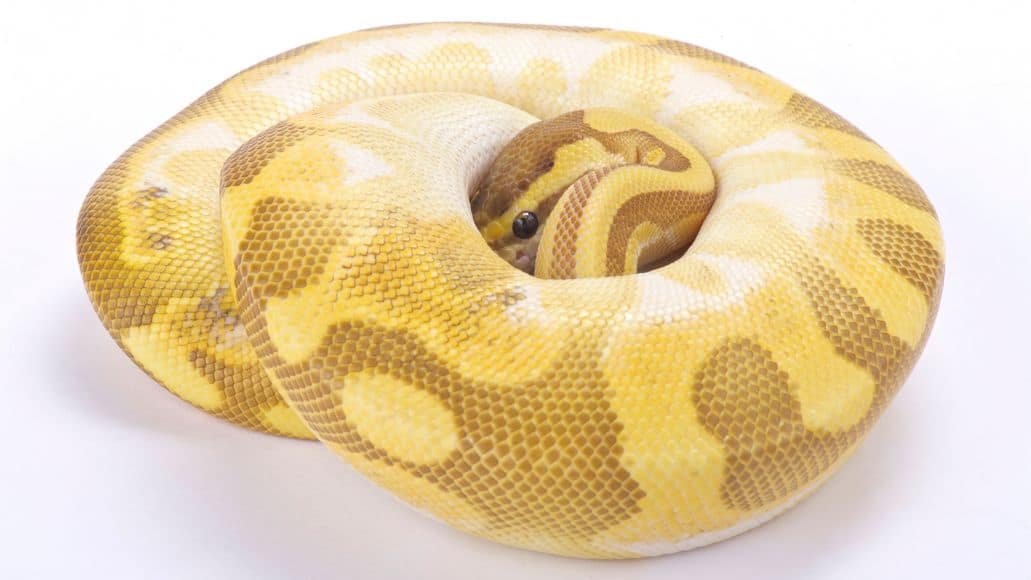
When a snake hides its head from you, it may be stressed. There are several ways to tell if a snake is feeling agitated, and seeing a serpent hide its eyes and upper body away from you is an excellent indicator.
This behavior is defensive. Most snakes can survive attacks to their tails, but not their heads. A ball python that has only left the very tip of its tail visible is telling you that it is scared and feeling threatened.
If your python is consistently adopting this position and refusing to eat its meals, it may be feeling particularly upset.
Poor Appetite
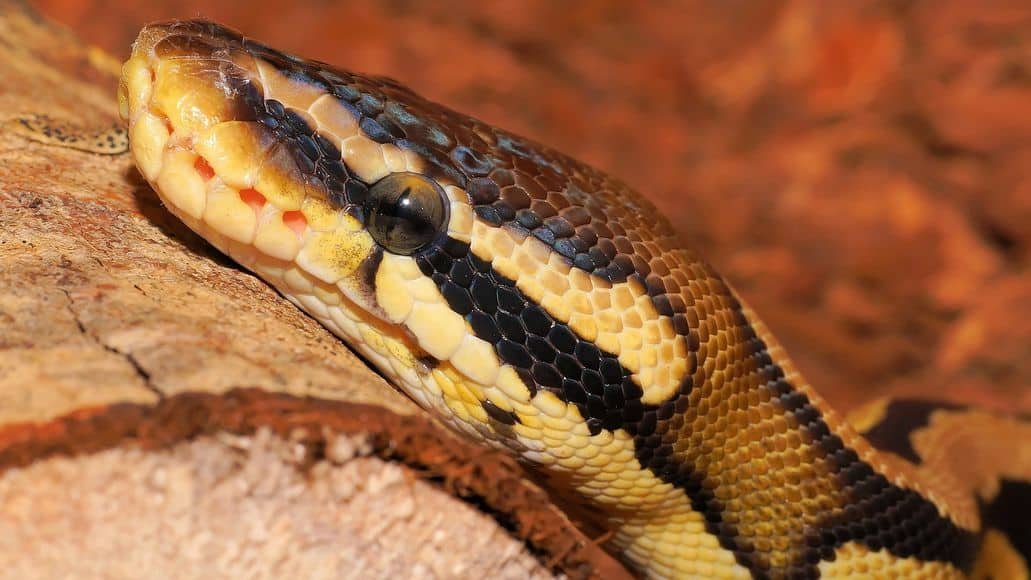
This symptom can be challenging to gauge. That’s because ball pythons only eat every one or two weeks.
Still, if you’ve allowed two weeks to pass without feeding your snake and it still isn’t interested in the grub you’ve laid down, it may be a sign of stress.
It might be worthwhile to double-check your snake’s dinner or lunch before assuming that the culprit is stress. Make sure you are feeding it something it wants and are doing everything else right.
Ball pythons eat fat crickets and plump mice. Their preferred diet varies depending on their size. They want to have a comfortable climate while eating and also be left alone.
A snake that is feeling too stressed-out to chow down may also exhibit other symptoms of stress. It might hide, hiss, coil, or attempt to escape its enclosure.
If not eating is the only symptom, the problem is likely something other than stress. Whatever the cause, you need to find a solution, so take your pet to the vet, if you can’t figure it out.
A ball python can go months without eating, but not getting any food for that long is a problem. A snake that doesn’t eat, will not grow to its full size and can suffer multiple health issues.
Escaping
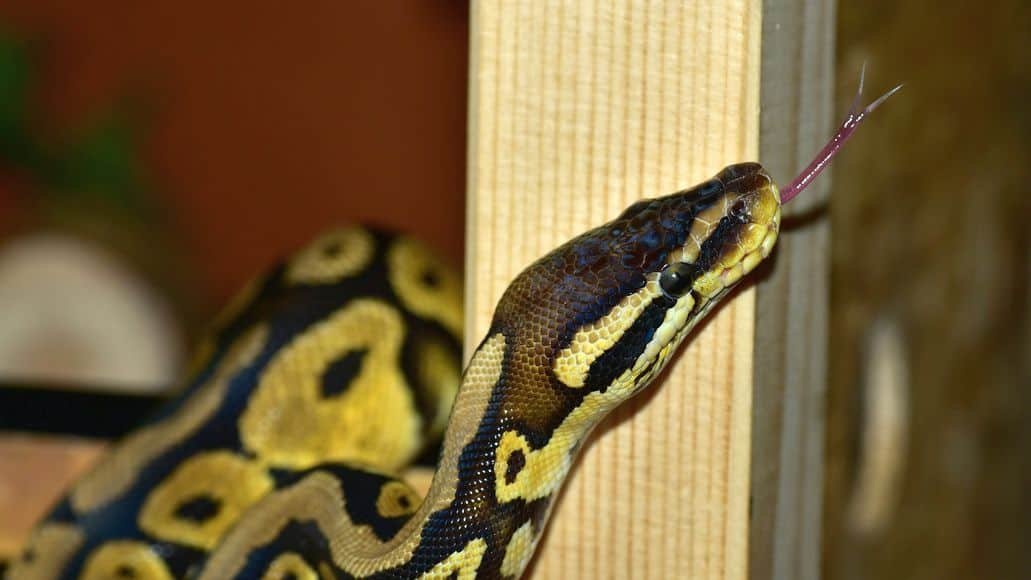
An escape attempt is a clear signal to pet owners that the habitat is unsuitable.
Rather than jumping to make your ball python’s enclosure more secure, you may want to take a moment to consider how comfortable it is.
A happy, secure, and comfortable snake, won’t feel such a desperate need to escape and explore the scary unknown. To learn how to tell if a snake is happy, follow that link.
Any time your ball python escapes, you need to rethink its habitat. It may not be warm enough or provide enough shelter and hiding places. You also want to make sure you choose a bedding your ball python likes.
Perhaps you’re not feeding your python as regularly as you should. No matter the issue, a ball python on the lam is a symptom of poor enclosure design and maintenance.
Vomiting
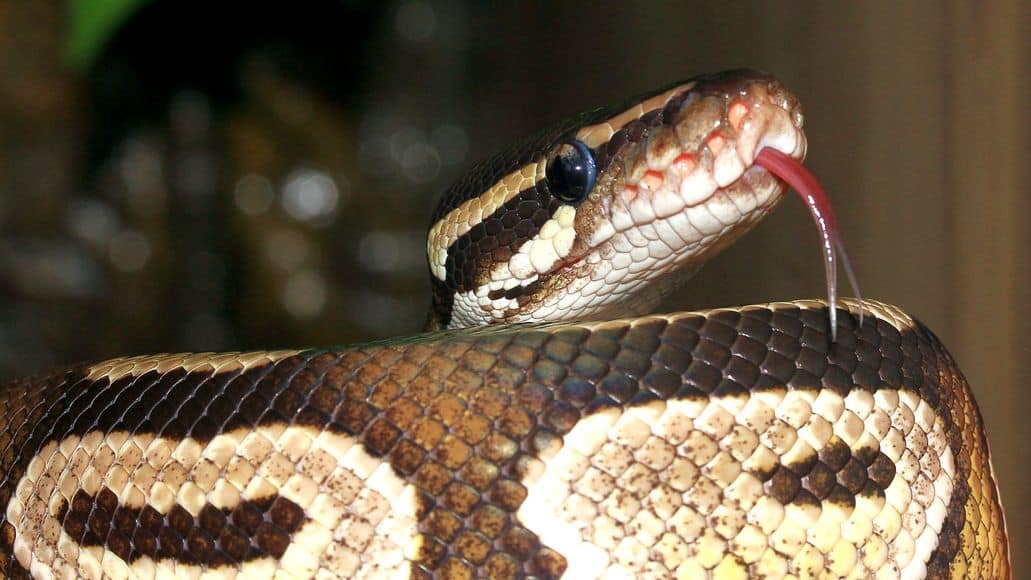
Vomiting, or regurgitating, is a relatively common behavior among snakes. It’s often indicative of extreme anger, annoyance, or chilly temperatures.
If you handle your snake immediately after feeding it, it may spit its meal back up to let you know that it’s not happy with your decisions.
If you fail to keep your ball python’s habitat warm, it may regurgitate its food soon after consuming it. That’s because reptiles rely on heat to help them digest their meals.
When temperatures drop, they can no longer absorb the nutrients from their prey, resulting in a swift and unpleasant upchuck.
Coiling

When a ball python coils up into a tight ball, it’s attempting to defend itself from a potential attack. Light or loose coiling is a far more relaxed pose.
Should you notice that your ball python has coiled into a tight mass, you may want to investigate its habitat to see if something is causing it to feel scared or insecure.
Tight coiling while holding or handling your ball python is just as unfavorable of a sign. If your ball python begins to constrict you during handling, you’ll need to uncoil it and house it at once. Otherwise, you could find yourself on the business end of a hungry python’s tongue.
Do ball pythons like to be handled in general? No, most of them do not enjoy being handled, so you will want to keep them handling to a minimum, unless you got a snake that enjoys it.
Sedentary Behavior
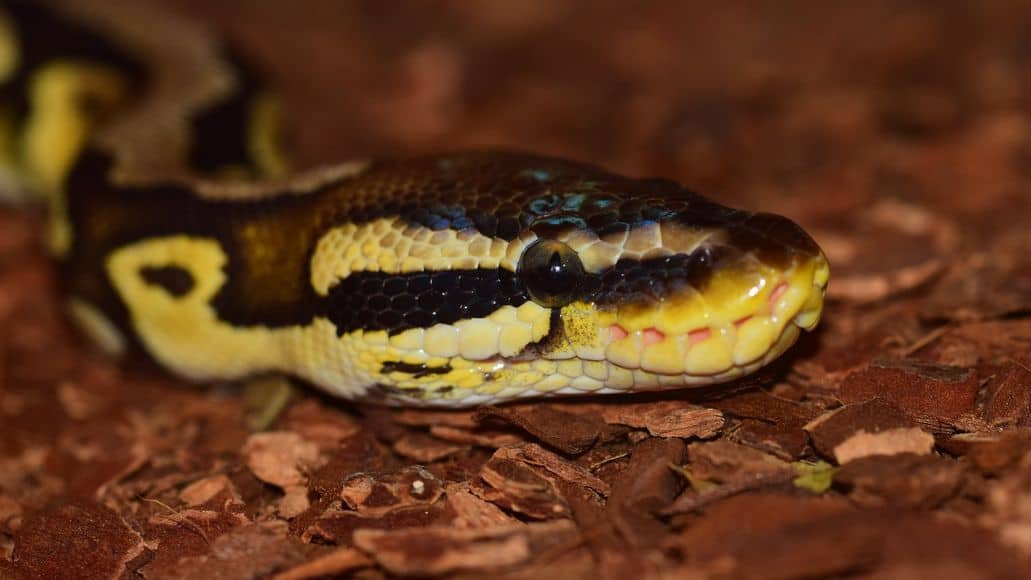
If your ball python isn’t moving and hasn’t moved for quite some time, it may be stressed-out or ill, despite its habitat remaining at a warm temperature.
Reptiles typically only become immobile or sedentary when digesting food or surviving cool temperatures. And remember that ball pythons do not poop often and take a long time to digest.
If your snake isn’t trying to digest its lunch or conserve energy, it may be feeling uncomfortable. It’s equally possible that your snake is suffering some type of illness or injury.
Consequently, it’s crucial to seek veterinary care if your ball python hasn’t moved in more than twenty-four hours.
While this species is nocturnal, it’s also relatively active. An absolute lack of movement may be indicative of significant problems that require immediate attention.
Signs Of Ball Python Stress: Final Thoughts
If you ball python is exhibiting any of these signs of stress, see if you can figure out what is causing it to feel stressed. You want to fix the issue as quickly as possible.
If you are housing two ball pythons together, that is the issue. Two snakes should not live together, unless you want to breed your ball pythons. It will always cause them both undue stress.
If you are unable to determine what is wrong, contact a veterinarian who has experience dealing with reptiles. Prolonged stress can have serious health consequences.
Leave a Reply